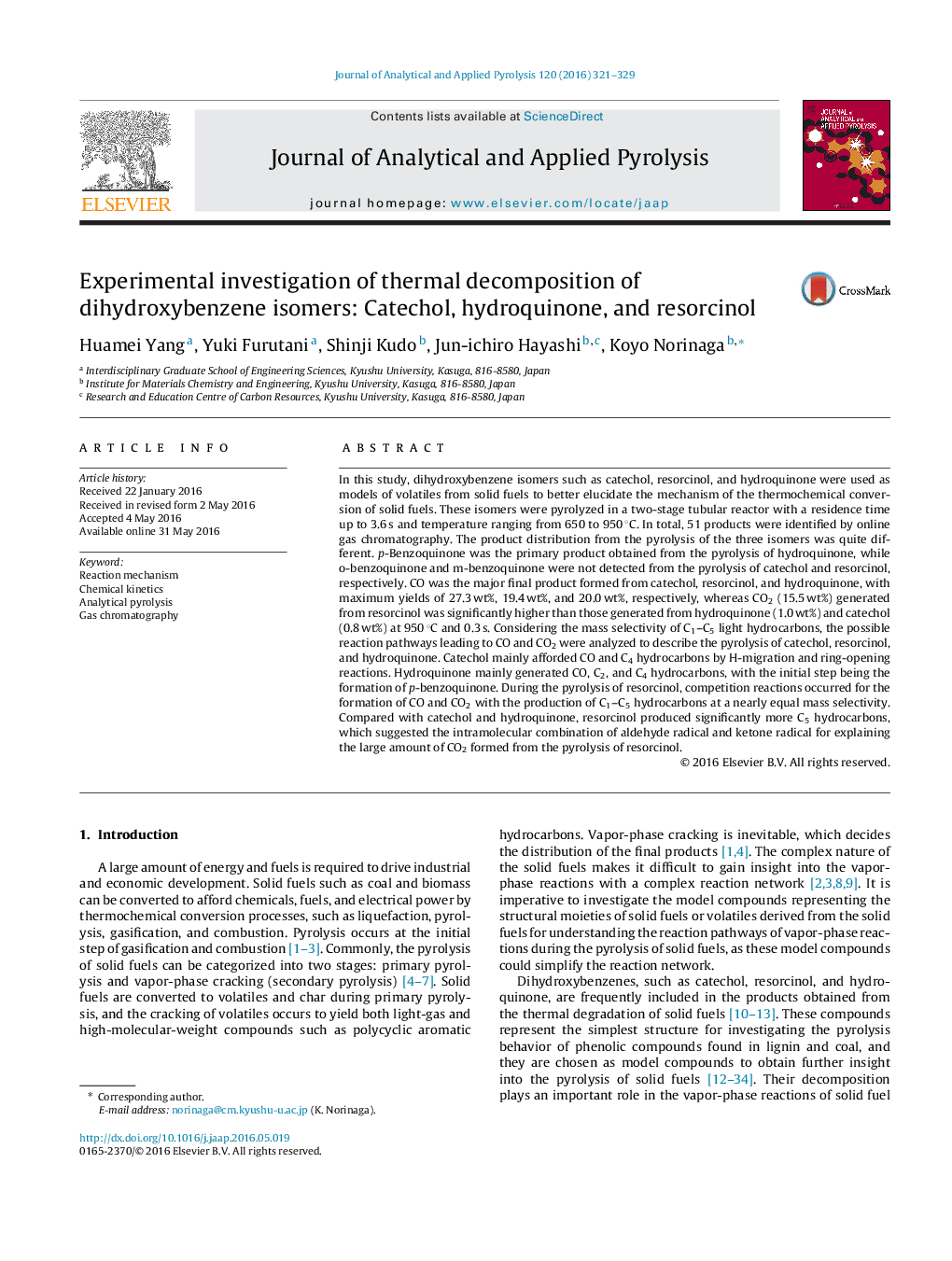| کد مقاله | کد نشریه | سال انتشار | مقاله انگلیسی | نسخه تمام متن |
|---|---|---|---|---|
| 1196557 | 1492957 | 2016 | 9 صفحه PDF | دانلود رایگان |
• Catechol, resorcinol, and hydroquinone were used as models of volatiles.
• The product distribution from the pyrolysis of three isomers was quite different.
• Resorcinol produced notably greater amount of CO2 than others did.
• Possible reaction pathways leading to CO and CO2 were proposed.
In this study, dihydroxybenzene isomers such as catechol, resorcinol, and hydroquinone were used as models of volatiles from solid fuels to better elucidate the mechanism of the thermochemical conversion of solid fuels. These isomers were pyrolyzed in a two-stage tubular reactor with a residence time up to 3.6 s and temperature ranging from 650 to 950 °C. In total, 51 products were identified by online gas chromatography. The product distribution from the pyrolysis of the three isomers was quite different. p-Benzoquinone was the primary product obtained from the pyrolysis of hydroquinone, while o-benzoquinone and m-benzoquinone were not detected from the pyrolysis of catechol and resorcinol, respectively. CO was the major final product formed from catechol, resorcinol, and hydroquinone, with maximum yields of 27.3 wt%, 19.4 wt%, and 20.0 wt%, respectively, whereas CO2 (15.5 wt%) generated from resorcinol was significantly higher than those generated from hydroquinone (1.0 wt%) and catechol (0.8 wt%) at 950 °C and 0.3 s. Considering the mass selectivity of C1–C5 light hydrocarbons, the possible reaction pathways leading to CO and CO2 were analyzed to describe the pyrolysis of catechol, resorcinol, and hydroquinone. Catechol mainly afforded CO and C4 hydrocarbons by H-migration and ring-opening reactions. Hydroquinone mainly generated CO, C2, and C4 hydrocarbons, with the initial step being the formation of p-benzoquinone. During the pyrolysis of resorcinol, competition reactions occurred for the formation of CO and CO2 with the production of C1–C5 hydrocarbons at a nearly equal mass selectivity. Compared with catechol and hydroquinone, resorcinol produced significantly more C5 hydrocarbons, which suggested the intramolecular combination of aldehyde radical and ketone radical for explaining the large amount of CO2 formed from the pyrolysis of resorcinol.
Journal: Journal of Analytical and Applied Pyrolysis - Volume 120, July 2016, Pages 321–329
